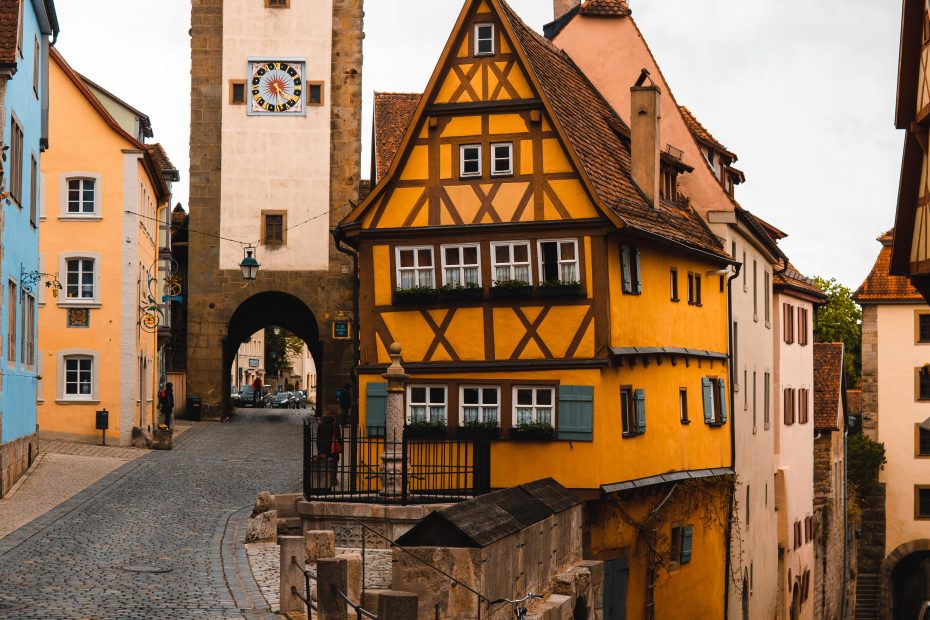Table of Contents
Introduction
With centuries of rich history and culture, Germany is home to some of Europe’s most beautiful and significant architecture. From medieval castles and cathedrals to post-war structures of glass and steel, the nation’s urban centers are filled with striking buildings that provide a window into Germany’s past and its architectural innovations. Whether you want to be transported back to the Middle Ages or see remnants of more recent history, Germany’s historic cities offer dramatic displays of timeless beauty.
Heidelberg
Nestled along the Neckar River, Heidelberg charms visitors with its narrow cobblestone streets and hilltop setting below the ruins of a striking medieval castle. Images of Heidelberg Castle, partially destroyed but still imposing, provide one of the iconic scenes of Germany’s romantic architectural treasures. The castle exemplifies the Gothic revival architecture of the 19th century, as it was renovated to portray its imagined medieval glory. Below the castle, the Old Bridge (Karl-Theodor-Brücke) stretches over the Neckar, providing panoramic views of the city and river below. Heidelberg is also home to the Church of the Holy Spirit, a Late Gothic church and the city’s most famous church.
Rothenburg ob der Tauber
The perfectly preserved medieval town of Rothenburg ob der Tauber transports visitors to the world of the Brothers Grimm fairy tales. Enclosed entirely within its intact 14th-century walls, this charming Bavarian town is a living museum of medieval Germany. Beyond the city gates lies Market Square, home to the gilded Renaissance fountain and the historic Council Tavern. The Medieval Crime and Justice Museum exhibits torture devices and vividly brings to life the grim realities behind the town’s picturesque facade. No visit is complete without touring the 15th-century St. Jakob’s Church, renowned for its carved altars and stained glass windows.
Munich
As the capital of Bavaria, Munich seamlessly blends old and new. The twin-onion domes of the Frauenkirche (Cathedral of Our Lady) have marked the city’s skyline since the late 15th century in the heart of the pedestrian-only city center. For strikingly different architecture, the nearby Nymphenburg Palace surrounded by gardens demonstrates the grandeur of the Bavarian royal family with its massive baroque facade. In contrast, the Englischer Garten (English Garden) provides an idyllic urban retreat with its sprawling meadows and leafy trails just steps away from the city bustle.
Berlin
After being divided for decades during the Cold War, Berlin today is once again a unified capital with an eclectic architectural legacy. The iconic Brandenburg Gate, built in the 18th century as a neoclassical triumphal arch, is a defining symbol of the city. The monumental dome of the Reichstag building, home of German Parliament, combines Prussian and modern elements after being rebuilt following World War II. Where the Berlin Wall once stood, the somber Holocaust Memorial commemorates the victims of the Nazi regime. These structures stand as reminders of Germany’s complex 20th-century history.
Hamburg
Along Germany’s north coast, the port city of Hamburg reveals the country’s maritime influences with buildings inspired by international styles. St. Michael’s Church draws from Italian Renaissance architecture as one of northern Germany’s finest baroque churches. In contrast, the imposing 20th century Hamburg Rathaus (City Hall) combines German grandeur with elements of northern European brick architecture. In the Speicherstadt historic district, the red-brick warehouses rising along canals evoke old Amsterdam.
Dresden
Nicknamed the “Florence of the Elbe,” Dresden showcases art and architecture in a romantic riverside setting. The elegant Zwinger Palace exemplifies the city’s baroque glory as an ornate backdrop for museum collections. Soaring domes and spires define the skyline, including at the landmark Frauenkirche (Church of Our Lady). Destroyed in World War II, the church was rebuilt using original 18th-century plans and now represents rebirth after devastation. The grand Semper Opera House has also been restored to its 19th-century splendor when it premiered major works by Wagner and Strauss.
Conclusion
Germany’s dense concentration of cultural capitals provides limitless opportunities to encounter history while admiring creative architecture. Strolling the medieval lanes of towns like Heidelberg and Rothenburg transports visitors centuries back in time. Meanwhile, the reconstructed grandeur of Munich, Berlin, and Dresden reveals more recent eras. Beyond the signature sights, discovering Germany’s architectural gems often requires only venturing down any fascinating old street to uncover more timeless beauty around the next corner. Whether it’s your first visit or a long-awaited return, Germany’s historic cities offer an endlessly rich architectural tapestry to explore.
FAQs:
What are the best cities to visit for history and architecture in Germany?
Some top cities for history and architecture include Berlin, Munich, Hamburg, Dresden, Heidelberg, and Rothenburg ob der Tauber. Each has a mix of striking medieval, baroque, Renaissance, and modern architecture.
What are the top architectural sights to see in Germany?
Famous architectural sights not to miss are Heidelberg Castle, Zwinger Palace, Brandenburg Gate, Cologne Cathedral, Neuschwanstein Castle, and the Frauenkirche domes in Dresden and Munich.
What is the architectural style of many buildings and churches in Germany?
Many major churches and historic buildings exhibit either Romanesque or Gothic medieval styles. Baroque architecture is also common in palaces and churches built in the 17th-18th centuries.
How was much of Germany’s architecture rebuilt after World War II?
After extensive damage in WWII, major reconstruction projects rebuilt historic German cities like Berlin, Munich, and Dresden by the 1980s. Many structures were meticulously restored according to their original plans.
What are some tips for exploring the history and architecture of Germany’s cities?
Walking and using public transit allows getting the most out of Germany’s beautiful urban centers. Joining guided tours or at least reading about the history before visiting provides context. Timing visits to avoid crowds also enhances the experience.
